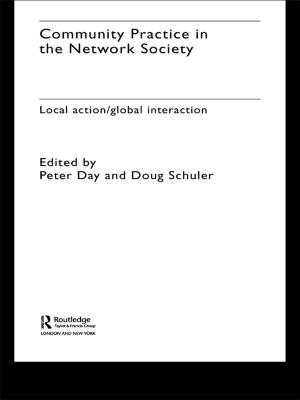From The Finca To The Maquila
Labor And Capitalist Development In Central America
Nonfiction, Social & Cultural Studies, Political Science| Author: | Juan Pablo Perez Sainz | ISBN: | 9780429979941 |
| Publisher: | Taylor and Francis | Publication: | February 19, 2018 |
| Imprint: | Routledge | Language: | English |
| Author: | Juan Pablo Perez Sainz |
| ISBN: | 9780429979941 |
| Publisher: | Taylor and Francis |
| Publication: | February 19, 2018 |
| Imprint: | Routledge |
| Language: | English |
This book presents an analysis of contemporary Central American from a social perspective and, more specifically, from that of one of its main components: the world of labor. Despite undeniable changes, this world is still made up of three basic logics. Labor markets reflect an inability to generate sufficient employment. Labor relations remain precarious. And labor subjects and actors solid enough for their voice to be heard have not managed to establish themselves. The result is that the world of labor in Central America is still marked by vulnerability. }The oligarchic crises in Central America has provoked a variety of responses at different levels during the last decades. The development of new agroexports in the 1950s, the import substitution industrialization of the 1960s, and the current opening up of trade along with the development of new tradables sectors under the influence of globalization, represent attempts to modernize the regions economies. The same has occurred at the political level with the current democratization processes that have meant competitive elections taking place in all the countries. It is at the social level that responses have been most weak and levels of poverty remain extremely high. This book presents an analysis of contemporary Central American history from a social perspective and, more specifically, from that of one of its main components: the world of labor. Despite undeniable changes, this world is still made up of three basic logics. Labor markets reflect an inability to generate sufficient employment. Labor relations remain precarious. And labor subjects and actors solid enough for their voice to be heard have not managed to establish themselves. The result is that the world of labor in Central America is still marked by vulnerability. }
This book presents an analysis of contemporary Central American from a social perspective and, more specifically, from that of one of its main components: the world of labor. Despite undeniable changes, this world is still made up of three basic logics. Labor markets reflect an inability to generate sufficient employment. Labor relations remain precarious. And labor subjects and actors solid enough for their voice to be heard have not managed to establish themselves. The result is that the world of labor in Central America is still marked by vulnerability. }The oligarchic crises in Central America has provoked a variety of responses at different levels during the last decades. The development of new agroexports in the 1950s, the import substitution industrialization of the 1960s, and the current opening up of trade along with the development of new tradables sectors under the influence of globalization, represent attempts to modernize the regions economies. The same has occurred at the political level with the current democratization processes that have meant competitive elections taking place in all the countries. It is at the social level that responses have been most weak and levels of poverty remain extremely high. This book presents an analysis of contemporary Central American history from a social perspective and, more specifically, from that of one of its main components: the world of labor. Despite undeniable changes, this world is still made up of three basic logics. Labor markets reflect an inability to generate sufficient employment. Labor relations remain precarious. And labor subjects and actors solid enough for their voice to be heard have not managed to establish themselves. The result is that the world of labor in Central America is still marked by vulnerability. }















